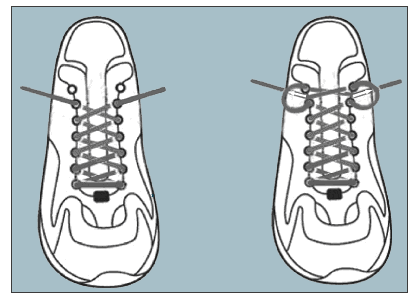There are so many ways to lace your runners, but are you like me and put on a pair of new running shoes without changing the way the laces are tied? If so, give some thought to the many options out there that can actually make your run more comfortable and easier.
Recently I had a friend show me the very cool and super-sportive heel lock method of tying my running shoe laces. Before this, I just used whatever lace configuration came with the shoe when I pulled it out of the box. I figured the people in the shoe store must have known what they were doing, right?
It doesn’t seem that way when you read the research. A group of scientists from the University of Duisberg in Germany have been studying the best way to lace running shoes since 2008. They studied the biomechanics of 20 distance runners who were all wearing the same shoe (Nike Air Pegasus), but tied the laces in several different ways, moving at 12 kilometre pace on a treadmill.
The first three lacing configurations involved tying the shoes (with the normal 6-eyelet cross lacing) with different tightnesses – weak, normal and tight, as perceived by the runners in the study. After that, the researchers tested some additional lacing patterns, including a seven-eyelet lacing using a “heel lock” loop on the final shoe eyelet, as shown below.
The results showed that shoes tied tightly reduce pronation and, more importantly, reduced impact loading rates. A tight lacing also reduced localised pressure on the outside of the foot, likely by pulling the heel deeper into the shoe’s insole. The study reinforces the importance of lacing up your shoes tightly, and the heel lock method is certainly a good idea to increase the stability of your shoes and reduce your chance of injury.
How to tie a heel lock shoe lace


